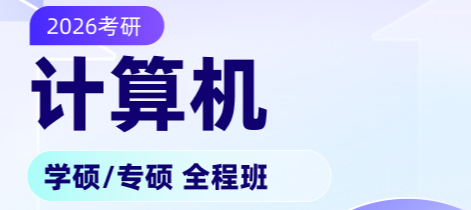1998-2022 ChinaKaoyan.com Network Studio. All Rights Reserved. 沪ICP备12018245号
2016考研英语(二)真题及参考答案
Section I Use of English
Directions:
Read the following text。 Choose the best word(s) for each numbered blank and mark A, B, C or D on the ANSWER SHEET。 (10 points)
Happy people work differently。 They’re more productive, more creative, and willing to take greater risks。 And new research suggests that happiness might influence 1 firms work, too。
Companies located in place with happier people invest more, according to a recent research paper。 2 , firms in happy places spend more on R&D(research and development)。That’s because happiness is linked to the kind of longer-term thinking 3 for making investment for the future。
The researchers wanted to know if the 4 and inclination for risk-taking that come with happiness would 5 the way companies invested。 So they compared U.S。 cities’ average happiness 6 by Gallup polling with the investment activity of publicly traded firms in those areas。
7 enough, firms’ investment and R&D intensity were correlated with the happiness of the area in which they were 8。 But it is really happiness that’s linked to investment, or could something else about happier cities 9 why firms there spend more on R&D? To find out, the researches controlled for various 10 that might make firms more likely to invest like size, industry , and sales-and-and for indicators that a place was 11 to live in, like growth in wages or population。
They link between happiness and investment generally 12 even after accounting for these things。
The correlation between happiness and investment was particularly strong for younger firms, which the authors 13 to “less confined decision making process” and the possible presence of younger and less 14 managers who are more likely to be influenced by sentiment。’’ The relationship was 15 stronger in places where happiness was spread more 16。 Firms seem to invest more in places。
17 this doesn’t prove that happiness causes firms to invest more or to take a longer-term view, the authors believe it at least 18 at that possibility。 It’s not hard to imagine that local culture and sentiment would help 19 how executives think about the future。 It surely seems plausible that happy people would be more forward –thinking and creative and 20 R&D more than the average,” said one researcher。
1。 [A] why [B] where [C] how [D] when
2。 [A] In return [B] In particular [C] In contrast [D] In conclusion
3。 [A] sufficient [B] famous [C] perfect [D] necessary
4。 [A] individualism [B] modernism [C] optimism [D] realism
5。 [A] echo [B] miss [C] spoil [D] change
6。 [A] imagined [B] measured [C] invented [D] assumed
7。 [A] sure [B] odd [C] unfortunate [D] often
8。 [A] advertised [B] divided [C] overtaxed [D] headquartered
9。 [A] explain [B] overstate [C] summarize [D] emphasize
10。 [A] stages [B] factors [C] levels [D] methods
11。 [A] desirable [B] sociable [C] reputable [D] reliable
12。 [A] resumed [B] held [C] emerged [D] broke
13。 [A] attribute [B] assign [C] transfer [D] compare
14。 [A] serious [B] civilized [C] ambitious [D] experienced
15。 [A] thus [B] instead [C] also [D] never
16。 [A] rapidly [B] regularly [C] directly [D] equally
17。 [A] After [B] Until [C] While [D] Since
18。 [A] arrives [B] jumps [C] hints [D] strikes
19。 [A] shape [B] rediscover [C] simplify [D] share
20。 [A] pray for [B] lean towards [C] give away [D] send act
Section II Reading Comprehension
Part A
Directions:
Read the following four texts。 Answer the questions below each text by choosing A, B, C or D。 Mark your answers on the ANSWER SHEET。 (40 points)
Text 1
It’s true that high-school coding classes aren’t essential for learning computer science in college。 Students without experience can catch up after a few introductory courses, said Tom Cortina, the assistant dean at Carnegie Mellon’s School of Computer Science。
However, Cortina said, early exposure is beneficial。 When younger kids learn computer science, they learn that it’s not just a confusing, endless string of letters and numbers – but a tool to build apps, or create artwork, or test hypotheses。 It’s not as hard for them to transform their thought processes as it is for older students。 Breaking down problems into bite-sized chunks and using code to solve them becomes normal。 Giving more children this training could increase the number of people interested in the field and help fill the jobs gap, Cortina said。
Students also benefit from learning something about coding before they get to college, where introductory computer-science classes are packed to the brim, which can drive the less-experienced or-determined students away。
The Flatiron School, where people pay to learn programming, started as one of the many coding bootcamps that’s become popular for adults looking for a career change。 The high-schoolers get the same curriculum, but “we try to gear lessons toward things they’re interested in,” said Victoria Friedman, an instructor。 For instance, one of the apps the students are developing suggests movies based on your mood。
The students in the Flatiron class probably won’t drop out of high school and build the next Facebook。 Programming languages have a quick turnover, so the “Ruby on Rails” language they learned may not even be relevant by the time they enter the job market。 But the skills they learn – how to think logically through a problem and organize the results – apply to any coding language, said Deborah Seehorn, an education consultant for the state of North Carolina。
Indeed, the Flatiron students might not go into IT at all。 But creating a future army of coders is not the sole purpose of the classes。 These kids are going to be surrounded by computers-in their pockets ,in their offices, in their homes –for the rest of their lives, The younger they learn how computers think, how to coax the machine into producing what they want –the earlier they learn that they have the power to do that –the better。
21.Cortina holds that early exposure to computer science makes it easier to _______
A。 complete future job training
B。 remodel the way of thinking
C。 formulate logical hypotheses
D。 perfect artwork production
22.In delivering lessons for high - schoolers , Flatiron has considered their________
A。 experience
B。 interest
C。 career prospects
D。 academic backgrounds
23.Deborah Seehorn believes that the skills learned at Flatiron will ________
A 。 help students learn other computer languages
B 。have to be upgraded when new technologies come
C 。need improving when students look for jobs
D。 enable students to make big quick money
24.According to the last paragraph, Flatiron students are expected to ______
A。 bring forth innovative computer technologies
B。 stay longer in the information technology industry
C。 become better prepared for the digitalized world
D。 compete with a future army of programmers
25.The word “coax”(Line4,Para.6) is closest in meaning to ________
A。 persuade
B。 frighten
C。 misguide
D。 challenge
Text 2
Biologists estimate that as many as 2 million lesser prairie chickens---a kind of bird living on stretching grasslands—once lent red to the often grey landscape of the midwestern and southwestern United States。 But just some 22,000 birds remain today, occupying about 16% of the species ‘historic range。
The crash was a major reason the U.S。 Fish and Wildlife Service (USFWS)decided to formally list the bird as threatened 。“The lesser prairie chicken is in a desperate situation ,”said USFWS Director Daniel Ashe。 Some environmentalists, however, were disappointed。 They had pushed the agency to designate the bird as “endangered,” a status that gives federal officials greater regulatory power to crack down on threats 。But Ashe and others argued that the” threatened” tag gave the federal government flexibility to try out new, potentially less confrontational conservations approaches。 In particular, they called for forging closer collaborations with western state governments, which are often uneasy with federal action。 and with the private landowners who control an estimated 95% of the prairie chicken‘s habitat。
Under the plan, for example, the agency said it would not prosecute landowner or businesses that unintentionally kill, harm, or disturb the bird, as long as they had signed a range—wide management plan to restore prairie chicken habitat。 Negotiated by USFWS and the states, the plan requires individuals and businesses that damage habitat as part of their operations to pay into a fund to replace every acre destroyed with 2 new acres of suitable habitat 。The fund will also be used to compensate landowners who set aside habitat , USFWS also set an interim goal of restoring prairie chicken populations to an annual average of 67,000 birds over the next 10 years 。And it gives the Western Association of Fish and Wildlife Agencies (WAFWA), a coalition of state agencies, the job of monitoring progress。 Overall, the idea is to let “states” remain in the driver ‘s seat for managing the species,” Ashe said。
Not everyone buys the win-win rhetoric。 Some Congress members are trying to block the plan, and at least a dozen industry groups, four states, and three environmental groups are challenging it in federal court。 Not surprisingly, doesn’t go far enough。 “The federal government is giving responsibility for managing the bird to the same industries that are pushing it to extinction, ” says biologist Jay Lininger。
26.The major reason for listing the lesser prairie as threatened is____。
[A]its drastically decreased population
[B]the underestimate of the grassland acreage
[C]a desperate appeal from some biologists
[D]the insistence of private landowners
27.The “threatened” tag disappointed some environmentalists in that it_____。
[A]was a give-in to governmental pressure
[B]would involve fewer agencies in action
[C]granted less federal regulatory power
[D]went against conservation policies
28.It can be learned from Paragraph3 that unintentional harm-doers will not be prosecuted if they_____。
[A]agree to pay a sum for compensation
[B]volunteer to set up an equally big habitat
[C]offer to support the WAFWA monitoring job
[D]promise to raise funds for USFWS operations
29.According to Ashe, the leading role in managing the species in______。
[A]the federal government
[B]the wildlife agencies
[C]the landowners
[D]the states
30.Jay Lininger would most likely support_______。
[A]industry groups
[B]the win-win rhetoric
[C]environmental groups
[D]the plan under challenge
Text 3
That everyone‘s too busy these days is a cliché。 But one specific complaint is made especially mournfully: There’s never any time to read。
What makes the problem thornier is that the usual time-management techniques don‘t seem sufficient。 The web’s full of articles offering tips on making time to read: “Give up TV” or “Carry a book with you at all times。” But in my experience, using such methods to free up the odd 30 minutes doesn‘t work。 Sit down to read and the flywheel of work-related thoughts keeps spinning-or else you’re so exhausted that a challenging book‘s the last thing you need。 The modern mind, Tim Parks, a novelist and critic, writes, “is overwhelmingly inclined toward communication…It is not simply that one is interrupted; it is that one is actually inclined to interruption。” Deep reading requires not just time, but a special kind of time which can’t be obtained merely by becoming more efficient。
In fact, “becoming more efficient” is part of the problem。 Thinking of time as a resource to be maximised means you approach it instrumentally, judging any given moment as well spent only in so far as it advances progress toward some goal。 Immersive reading, by contrast, depends on being willing to risk inefficiency, goallessness, even time-wasting。 Try to slot it as a to-do list item and you‘ll manage only goal-focused reading-useful, sometimes, but not the most fulfilling kind。 “The future comes at us like empty bottles along an unstoppable and nearly infinite conveyor belt,” writes Gary Eberle in his book Sacred Time, and “we feel a pressure to fill these different-sized bottles (days, hours, minutes) as they pass, for if they get by without being filled, we will have wasted them。” No mind-set could be worse for losing yourself in a book。
So what does work? Perhaps surprisingly, scheduling regular times for reading。 You‘d think this might fuel the efficiency mind-set, but in fact, Eberle notes, such ritualistic behaviour helps us “step outside time’s flow” into “soul time。” You could limit distractions by reading only physical books, or on single-purpose e-readers。 “Carry a book with you at all times” can actually work, too-providing you dip in often enough, so that reading becomes the default state from which you temporarily surface to take care of business, before dropping back down。 On a really good day, it no longer feels as if you‘re “making time to read,” but just reading, and making time for everything else。
31。 The usual time-management techniques don’t work because 。
[A] what they can offer does not ease the modern mind
[B] what challenging books demand is repetitive reading
[C] what people often forget is carrying a book with them
[D] what deep reading requires cannot be guaranteed
32。 The “empty bottles” metaphor illustrates that people feel a pressure to 。
[A] update their to-do lists
[B] make passing time fulfilling
[C] carry their plans through
[D] pursue carefree reading
33。 Eberle would agree that scheduling regular times for reading helps 。
[A] encourage the efficiency mind-set
[B] develop online reading habits
[C] promote ritualistic reading
[D] achieve immersive reading
34。 “Carry a book with you at all times”can work if 。
[A] reading becomes your primary business of the day
[B] all the daily business has been promptly dealt with
[C] you are able to drop back to business after reading
[D] time can be evenly split for reading and business
35。 The best title for this text could be 。
[A] How to Enjoy Easy Reading
[B] How to Find Time to Read
[C] How to Set Reading Goals
[D] How to Read Extensively
Text 4
Against a backdrop of drastic changes in economy and population structure, younger Americans are drawing a new 21st-century road map to success, a latest poll has found。
Across generational lines, Americans continue to prize many of the same traditional milestones of a successful life, including getting married, having children, owning a home, and retiring in their sixties。 But while young and old mostly agree on what constitutes the finish line of a fulfilling life, they offer strikingly different paths for reaching it。
Young people who are still getting started in life were more likely than older adults to prioritize personal fulfillment in their work, to believe they will advance their careers most by regularly changing jobs, to favor communities with more public services and a faster pace of life, to agree that couples should be financially secure before getting married or having children, and to maintain that children are best served by two parents working outside the home, the survey found。
From career to community and family, these contrasts suggest that in the aftermath of the searing Great Recession, those just starting out in life are defining priorities and expectations that will increasingly spread through virtually all aspects of American life, from consumer preferences to housing patterns to politics。
Young and old converge on one key point: Overwhelming majorities of both groups said they believe it is harder for young people today to get started in life than it was for earlier generations。 Whlie younger people are somewhat more optimistic than their elders about the prospects for those starting out today, big majorities in both groups believe those “just getting started in life” face a tougher a good-paying job, starting a family, managing debt, and finding affordable housing。
Pete Schneider considers the climb tougher today。 Schneider, a 27-yaear-old auto technician from the Chicago suburbs says he struggled to find a job after graduating from college。 Even now that he is working steadily, he said。” I can’t afford to pay ma monthly mortgage payments on my own, so I have to rent rooms out to people to mark that happen。” Looking back, he is struck that his parents could provide a comfortable life for their children even though neither had completed college when he was young。“I still grew up in an upper middle-class home with parents who didn’t have college degrees,”Schneider said。“I don’t think people are capable of that anymore。 ”
36。 One cross-generation mark of a successful life is 。
[A] trying out different lifestyles
[B] having a family with children
[C] working beyond retirement age
[D] setting up a profitable business
37。 It can be learned from Paragraph 3 that young people tend to 。
[A] favor a slower life pace
[B] hold an occupation longer
[C] attach importance to pre-marital finance
[D] give priority to childcare outside the home
38。 The priorities and expectations defined by the young will 。
[A] become increasingly clear
[B] focus on materialistic issues
[C] depend largely on political preferences
[D] reach almost all aspects of American life
39。 Both young and old agree that 。
[A] good-paying jobs are less available
[B] the old made more life achievements
[C] housing loans today are easy to obtain
[D] getting established is harder for the young
40。 Which of the following is true about Schneider?
[A] He found a dream job after graduating from college
[B] His parents believe working steadily is a must for success
[C] His parents’ good life has little to do with a college degree
[D] He thinks his job as a technician quite challenging
Part B
Directions:
Read the following text and answer the questions by choosing the most suitable subheading from
the list A-G for each numbered paragraphs (41-45)。 There are two extra subheadings which you do not need to use。 Mark your answers on the ANSWER SHEET。 (10 points)
A。 Be silly
B。 Have fun
C。 Ask for help
D。 Express your emotions。
E。 Don’t overthink it
F。 Be easily pleased
G。 Notice things
Act Your Shoe Size, Not Your Age。
(1) As adults, it seems that we’re constantly pursuing happiness, often with mixed results。
Yet children appear to have it down to an art-and for the most part they don’t need self-help books or therapy。 Instead, they look after their wellbeing instinctively and usually more effectively than we do as grownups。 Perhaps it’s time to learn a few lessons from them。
41___________。
(2) What does a child do when he’s sad? He cries。 When he’s angry? He shouts。 Scared? Probably a bit of both。 As we grow up, we learn to control our emotions so they are manageable and don’t dictate our behaviours, which is in many ways a good thing。 But too often we take this process too far and end up suppressing emotions, especially negative ones。 That’s about as effective as brushing dirt under a carpet and can even make us ill。 What we feel appropriately and then-again, like children-move on。
42__________。
A couple of Christmases ago, my youngest stepdaughter, who was 9 years old at the time, got a Superman T-shirt for Christmas。 It cost less than a fiver but she was overjoyed, and couldn’t bigger house or better car will be the magic silver bullet that will allow us to finally be content, but the reality is these things have little lasting impact on our happiness levels。 Instead, being grateful for small things every day is a much better way to improve wellbeing。
43__________。
Have you ever noticed how much children laugh? If we adults could indulge in a bit of silliness and giggling, we would reduce the stress hormones in our bodies, increase good hormones like endorphins, improve blood flow to our hearts and ever have a greater chance of fighting off infection。 All of which would, of course, have a positive effect on our happiness levels。
44__________。
The problem with being a grownup is that there’s an awful lot of serious stuff to deal with-work, mortgage payments, figuring out what to cook for dinner。 But as adults we also have the luxury of being able to control our own diaries and it’s important that we schedule in time to enjoy the thing we love。 Those things might be social, sporting, creative or completely random (dancing around the living room, anyone?)-it doesn’t matter, so long as they’re enjoyable, and not likely to have negative side effects, such as drinking too much alcohol or going on a wild spending spree if you’re on a tight budget。
45__________。
Having said all of the above, it’s important to add that we shouldn’t try too hard to be happy。 Scientists tell us this can back fire and actually have a negative impact on our wellbeing。 As the Chinese philosopher Chuang Tzu is reported to have said: “Happiness is the absence of striving for happiness。” And in that, once more, we need to look to the example of our children, to whom happiness is not a goal but a natural byproduct of the way they live。
Section III Translation
Directions:
Translate the following text into Chinese。 Write your translation on the ANSWER SHEET。 (15 points)
The supermarket is designed to lure customers into spending as much time as possible within its doors。 The reason for this is simple: The longer you stay in the store, the more stuff you’ll see, and the more stuff you see, the more you’ll buy。 And supermarkets contain a lot of stuff。 The average supermarket, according to the Food Marketing Institute, carries some 44,000 different items, and many carry tens of thousands more。 The sheer volume of available choice is enough to send shoppers into a state of information overload。 According to brain-scan experiments, the demands of so much decision-making quickly become too much for us。 After about 40 minutes of shopping, most people stop struggling to be rationally selective, and instead began shopping emotionally—which is the point at which we accumulate the 50 percent of stuff in our cart that we never intended buying。
Section IV Writing
Part A
47。 Directions:
Suppose you won a translation contest and your friend, Jack, wrote an email to congratulate you and ask for advice on translation。 Write him a reply to
1) thank him, and
2) give you advice
You should write about 100 on the ANSWER SHEET。
Do not sign your own name at the end of the letter。 Use Li Ming instead。
Do not write the address。 (10 points)
Part B
48。 Directions:
Write an essay based on the chart below。 In your writing, you should
1) interpret the chart, and
2) give your comments。
You should write about 150 words on the ANSWER SHEET。 (15 points)

答案
Section I Use of English
1. how
2. In particular
3. necessary
4. optimism
5. change
6. measured
7. sure
8. headquartered
9. explain
10. factors
11. desirable
12. emerged
13. Attribute
14.experienced
15. thus
16. Equally
17. while
18. hints
19. Shape
20. lean towards
II Reading comprehension
Text 1
21. B Remodel the way of thinking
22. D Interest
23. A Help students learn other computer languages
24. C Become better prepared for the digitalized world
25. B Persuade
Text 2
26. Its dramatically decreased population
27. Granted less federal regulatory powder
28. Agree to pay sum for compensation
29. The states
30. Industry group
Text 3
31. what deep reading required cannot be guaranteed
32. Make passing time fulfilling
33. Achieve immersive reading
34. Reading become your primary business of the day
35. Find time to read
Text 4
36. Having a family with a child
37. Attach importance to pre-marital finance
38. Reach almost all aspects of American life
39. Getting established is harder for the young
40. His parents’ good life has little to do with a college degree
Part B
41. Express your emotions
42. Be easily pleased
43. Be silly
44. Have fun
45. Don’t over think it
Part C
【原文】
The supermarket is designed to lure customers into spending as much time as possible within its doors. The reason for this is simple:The longer you stay in the store, the more stuff you’ll see, and the more stuff you see, the more you’ll buy. And supermarkets contain a lot of stuff. The average supermarket, according to the Food Marketing Institute, carries some 44,00 different items, and many carry tens of thousands more. The sheer volume of available choice is enough to send shoppers into a state of information overload. According to brain-scan experiments, the demands of so much decision-making quickly become too much for us. After about 40 minutes of shopping, most people stop struggling to be rationally selective, and instead begin shopping emotionally – which is the point at which we accumulate the 50 percent of stuff in our cart that we never intended buying.
【参考译文】
超市旨在吸引顾客在店里停留尽量长的时间。原因非常简单:顾客在店里停留的时间越长,看到的商品越多,看到的商品越多,买的越多。超市陈列了大量的商品。根据食品推广协会的调查,一般超市里有约44000种不同的商品;大多数超市都有上万种。如此众多的选择足以使顾客面对的信息过于繁杂。根据脑部扫描实验,需要快速的做这么多的决定就会使我们太累。大约购物40分钟以后,大多人就不会拼命去做出理性的选择,取而代之的是冲动购物——此时,在购物车里,我们已经装了一半根本没想买的东西。
III Writing
Part A
Directions:
Suppose you won a translation contest and your friend, Jack, wrote an email to congratulate you and ask for advice on translation. Write him a reply to
1) thank him, and
2) give advice.
You should write neatly on the ANSWER SHEET.
Do not sign your own name at the end of the text. Use “Li Ming” instead.
Do not write the address.(10 points)
参考范文:
Dear Jack,
Thank you for your warm congratulation on my winning the translation contest. Now I will give you some advice on translation.
To begin with, you should have an earnest interest in translation, for, just as Einstein says, interest is the best teacher. Besides, you should have an extensive reading on the two languages, because accurate translation demands that you should have a good grasp of the two languages and the culture related to the two languages. Moreover, you should grasp essential translation techniques, which will facilitate the translating process.
I hope that you can acquire some more understanding of translation via my advice.
Yours sincerely,
Li Ming
Part B
As can be apparently illustrated /depicted in the pie graph, the purposes of the students of a college can be divided into five parts, with admiring the scenery and relieving the pressure, making friends, developing their independent capabilities and the rest accounting for 37 %, 33%, 6%, 9% and 15 % respectively. Isolated as the figures seem to be in the pie graph, as a matter of fact, they are connected with one another closely.
Obviously, a variety of complicated factors contribute to the phenomenon illustrated in the chart above, with the following two ones being the foremost. To begin with, among the most convincing reasons offered by people for this phenomenon, one should be emphasized that the improvement of our society and the progress of science and technology put the most pressure on the college students, which make them tired and bored toward their work and study. In addition to this, another equally vital point to be considered is that college students’ attitudes towards travel constitute a major reason for the phenomenon.
Just as an old proverb says, “every coin has its two sides.” The situation of college students’ traveling is no exception. From what has been discussed above, what we should pay attention is to encourage the positive effects and eliminate its negative influence as far as possible.
来源未注明“中国考研网\考研信息网”的资讯、文章等均为转载,本网站转载出于传递更多信息之目的,并不意味着赞同其观点或证实其内容的真实性,如涉及版权问题,请联系本站管理员予以更改或删除。如其他媒体、网站或个人从本网站下载使用,必须保留本网站注明的"稿件来源",并自负版权等法律责任。
来源注明“中国考研网”的文章,若需转载请联系管理员获得相应许可。
联系方式:chinakaoyankefu@163.com
- 2026考研英语全程班 6班
- 权威高配师资亲授技巧,教研千锤百炼科学提分。直录播课相结合精讲互动二合一,专业团队精细化作文批改。讲练结合,随学随练稳步提升。支持试听~
- 主讲团队:王江涛、谭剑波、董仲蠡、许聪杰、陈志超、潘赟、郑艳彤、易熙人

扫码关注
了解考研最新消息












